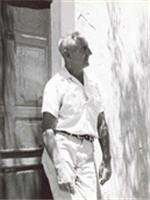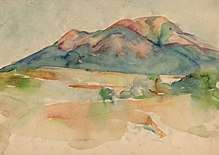Charles Bolsius
Charles William Bolsius was born in 's-Hertogenbosch, the Netherlands on 23 June 1907.[1] He studied art formally in Europe moving to New Mexico in the early 1930s. He settled in Tucson in 1934. In that year he was painting, printing, building, and hand carving fine furniture and doors.

Charles Bolsius | |
|---|---|
 | |
| Born | Charles William Bolsius June 23, 1907 |
| Died | March 23, 1983 (aged 75) |
| Nationality | American |
| Education | Royal Academy of Art in the Hague |
| Known for | Painting Furniture design Printmaking Woodcarving |
| Movement | Exprestionism, social realism |
Life and work
Charles Bolsius's sophisticated artistic sensibly was influenced by German and Dutch expressionists including: Leo Gestel, Jan Toorop, Kees van Dongen, and Emil Nolde while embracing the scale and environmental tonality of the American West.

He exhibited his art in Arizona, New Mexico, Utah, and San Francisco. He designed and built numerous modified territorial/pueblo revival buildings in and around old Fort Lowell on the edge of Tucson and was a member of many Tucson art organizations.
His wood work can be seen throughout the old Fort Lowell Historic District, Arizona State University Kerr House,[2] in homes in Tucson's Catalina Foothills (including the front door of 2540 East Camino La Zorrela), the Church Doors of Sasabe, Arizona and the doors to the Our Lady of Sorrows chapel at San Xavier del Bac. The dining room table at Rancho De La Osa in Sasabe, Arizona
Bolsius died in March 1983 in Tucson, Pima County, Arizona.
References
- "Charles Bolsius - Bio, Artworks, Exhibitions and more - Artland". www.artland.com. Retrieved 2020-08-13.
- "Archived copy". Archived from the original on 2017-07-10. Retrieved 2017-07-30.CS1 maint: archived copy as title (link)
- Turner, Teresa, The People of Fort Lowell, Fort Lowell Historic District Board
- Arizona Daily Star, Bolsius dies; artist was 75, March 23, 1983.